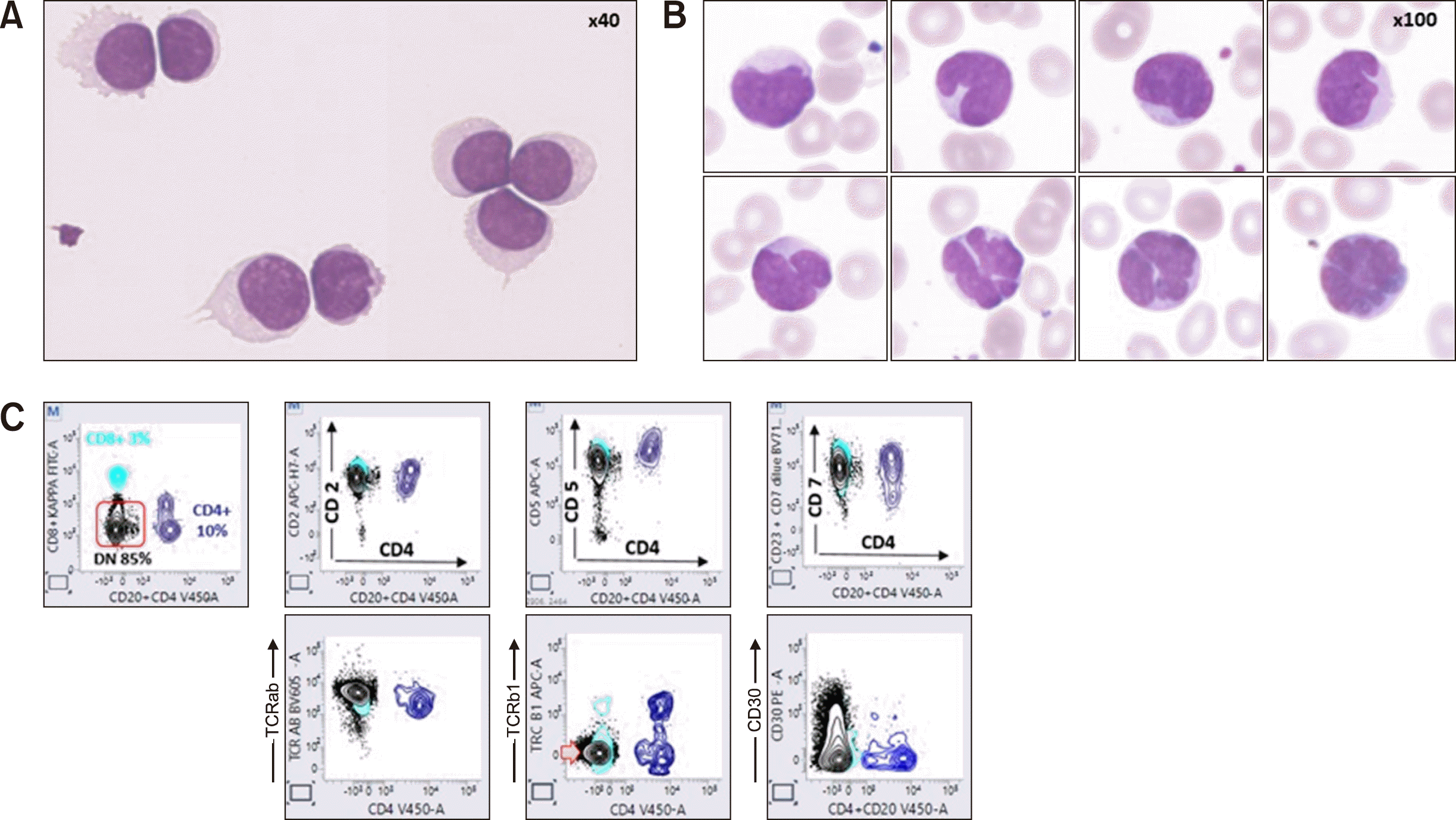
A 55-year-old man was hospitalized for febrile confusion with no documentation of infection. Cerebrospinal fluid (CSF) was hypercellular (8,000 white blood cells/mL, <10 red blood cells/mL) with monomorphous lymphoid cells [A, May-Grünwald Giemsa (MGG)]. Peripheral blood (PB) smear revealed atypical polymorphous lymphoid cells [70% of lymphocytes (7.88×109/L)], some with irregular nuclei mimicking “flower cells” usually observed in adult T-cell leukaemia/lymphoma (B, MGG). HTLV-1 serology was negative. The bone marrow (BM) biopsy showed CD4-/CD8-/CD3+/CD2+/CD5+/CD7+ lymphoid nodular infiltrate with expression of TCRa/b. Flow cytometry of PB identified an expanded CD4-/CD8-mature T-cell population expressing TCRa/b with loss of TRCb1 expression (C, black population, red arrow), which was also observed in CSF. PCR analysis confirmed clonal identity of this T-cell population in CSF and PB. Karyotype was normal and no molecular abnormalities were detected by NGS. No lymphadenopathy or splenomegaly was found by PET-scan, and no skin lesions were observed. Contrast MRI of the brain and total spine revealed cauda equina meningoradiculitis and hypersignal FLAIR of the hippocampus. The patient was first treated with CHOP, HD-MTX, IT MTX+ARAC, then with BENDAMUSTINE (due to relapse after one cycle of chemotherapy), and finally received BRENTUXIMAB/VEDONTIN (associated with chemotherapy) due to CD30 expression in lymphoma cells. Unfortunately, he died 3 months after diagnosis. Curiously, during treatment the immunologic profile of lymphomatous cells was modified with the cytotoxic marker expression profile CD16+, TIA1+/Perforine+/Granzyme+. This case illustrates an unusual peripheral T-cell lymphoma, with NOS (retained due to absence of immunologic and molecular markers), CSF involvement, and very poor prognosis.




 PDF
PDF Citation
Citation Print
Print


 XML Download
XML Download